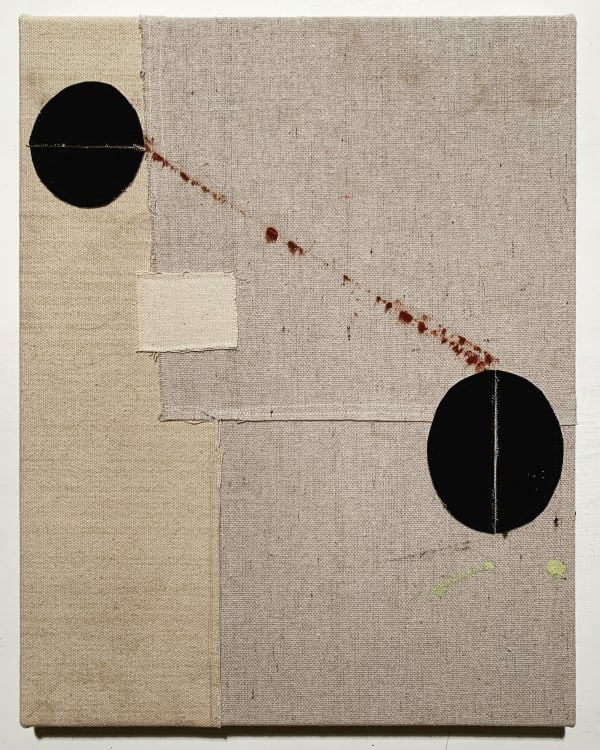Jonathan Parker uses simple, direct processes in his painterly works. These pieces include elements of drawing, painting, and more provisional approaches like mending and appliqué. The artist works by cutting fabrics and canvas, sewing them together, painting, adding sewn shapes and then stretching the piece over stretcher bars. Using a loose, invented visual vocabulary of forms, Parker intuitively works to guide these repetitions and elaborations.
Inspired by both nature and folk art, Mr. Parker views his works as a natural evolution of these sources. Nature seeps into the colors he chooses. The shapes he selects from this evolution can be geometric - circles, semicircles, arcs, spirals, quadrants, rectangles, squares, ovals - or they can be organic biomorphs reminiscent of Joan Miro. "People tell me that the shapes I use suggest machines, organs, tools utensils and aerial views," he says. [...]
Unknowingly, Mr. Parker is also following the tradition of hundreds of years of male quilters. Soldiers, sailors, prisoners, and patients would pass their confined time by quilting. Such quilts memorialized wartime exploits, provided comfort for those injured or convalescing, and helped forestall boredom or fear. Like Mr. Parker and the Gee's Bend quilters, these men used old fabrics such as uniforms, blankets, and rags. During World War I, 138 wounded British soldiers quilted an altar cloth. "The quilts show man's determination to create beauty out of the fear and dread of war," writes Jason Daley in an article for the Smithsonian Magazine.
[...] Mr. Parker does not describe his process as intentionally historical, but rather spontaneous and intuitive. He does not start with a clean slate, a tabula rasa. His materials incorporate past actions, almost fingerprints from the past, of stains, mistakes, and raw, unraveled edges. He works subconsciously, and not necessarily intentionally, as tradition, texture, color, and shape all interact to inspire him. He notices that as he works, he falls into a flow in which the sense of time and place are lost. He feels no stress, no pressure, just a joyous reaction to the combination of method and material.
-- Written by Sharon McCawley, Curatorial Docent at the New Mexico Museum of Art











